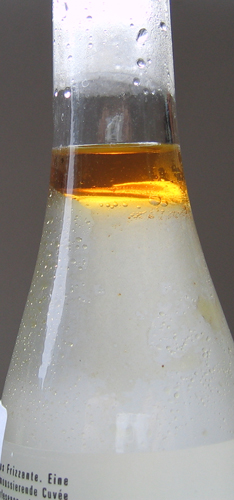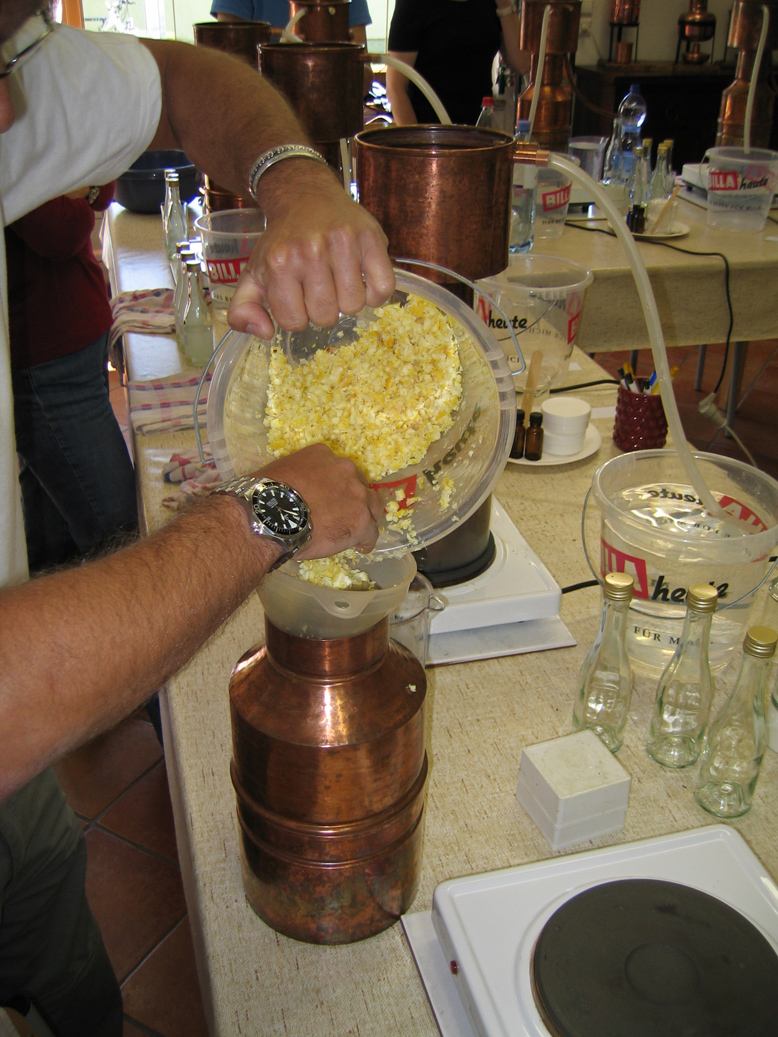 English
English Deutsch
Deutsch
 Distilling Essential Oils
Distilling Essential Oils
Distilling essential oils and hydrosols at home – A Five Step by Step Beginner’s Guide
The distillation of essential oils and hydrosols at home is a great hobby. But how to steam distill essential oils and hydrosols with high quality and a large amount? It is not enough to harvest the plants, put them into the essential oil distiller and make the distillation. For harvesting the herbs and plants and for making the distillation (= distilling essential oils and hydrosols) a certain rate of Know-how is necessary. Not till then the distillation of essential oils and hydrosols will make great gladeness.
Why do-it-yourself distillation of essential oils and hydrosols
There are numberless essential oils and hydrosols in supermarkets available. At one-line shops you receive nearly every plant as essential oil. Therefore why make great efforts to Distilling essential oils and hydrosols at home?
- The Water Steam Distillation to make your own essential oils hydrosols is a good possibility to utilize all your herbs and plantmaterials.
- In a small scale you can make nearly all essential oils and waters that are also available in the shops. Further you can fill the still with your own mixtures of distillation material (= Co-Distillation).
- If you properly prepare the plant for the distillation you can reach a top quality in the hobby-scale. Because only if you distill the hydrosol and essential oils by yourself you will get the whole active ingredients of the plant into the oil and floral water. Purchased essential oils and hydrolates are again distilled after the steam distillation and also purified. Thereby a part of the ingredients will be separated. Purchased hydrosols are extremly diluted with water in comparison to the selfmade essential waters.
- Distilling essential oils and hydrosols at home leads to numerous experiments and thus makes a lot of pleasure.
- The yield of essential oils and hydrosols is very great by homemade products.
Distilling essential oils and hydrosols at home – A 5 Step by Step Beginner’s Guide
How to extract essential oil and hydrosol from the plants? How works a distillation? Can everybody make his own essential oil and hydrosol? What to observe to make quality essential oils and great yields?
-
Legal situation of the water steam distillation
The distillation and production of essential oils and hydrosols is regulated different in nearby every country. Contact your customs office or inform yourself in the web, what kind of stills are permitted without declaration respectively when you would need a license.
-
Harvesting the plants
You have to harvest the herbs, spices, blossoms etc. at the optimum point of time, which is different at every plant. Roses for instance will be croped for the best oil yield early in the morning, but lavender after three days of sunshine during the lunchtime.
-
Shred the plants
It is neceassary to comminute the plants well, otherwise you would have nearly no oil amount. But it is important, that you produce no pump of the plant material because the water steam wouldn’t be able to come through the mash. Lavender you can also dry before you put it into the distiller. Further hints how to steam distill essential oils and hydrosols at home you find also in the recipes.
-
The Distillation – Distilling essential oils and hydrosols at home
Equal if you build your own still or if you buy a professionell oil distiller, take care that the plants are located in the vapour zone and not get boiling in the water (look also tips for buying or building your own essential oil still). The distillation should be made as prompt as possible, because you destroy as moore active components as longer the plants are cooking in the heat. The collecting vessel could be e.g. a bottle with a thin neck, so it is easier to collect the essential oil. Stop the distillation at the correct time so that there is no burning in the kettle. Here you can see an oil distillation with the still Leonardo in pictures.
-
Separating the essential oil
You can remove the essential oil approximately 14 days after the distillation. Typically the oil swims on the surface, therfore you can collect ist with an injection or with a pipette. Heavy oils like cinnamon or clove are at the bottom of the collecting vessel and you have to catch it with a special equipment for heavy oils.
Good Luck!
DFS Schmickl – equipment for the Distillation of essential oils and hydrosols and courses
-
Distillers and other equipment – Distilling essential oils and hydrosols at home:
Stills for essential oils, bottles, soapflakes, books – all equipment you need to make your own essential oils and herbal waters at home.
-
Distilling classes – learn how to make your own essential oils and hydrosols:
Workshops and online-courses
-
Know-How – How to steam distill essential oils and hydrosols at home:
Book and Forum about the Distillation of essential oils and floral waters
Book – How to make essential oils and hydrosols Forum – How to extract essential oil and hydrosols from the plants






